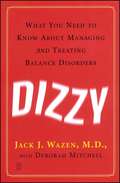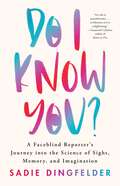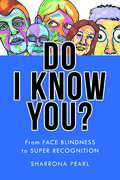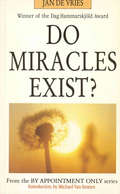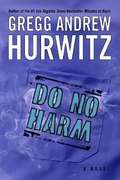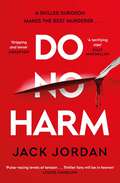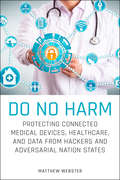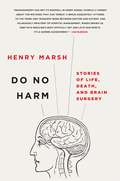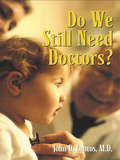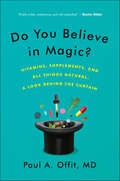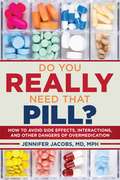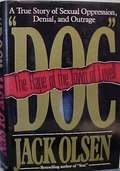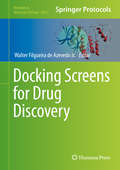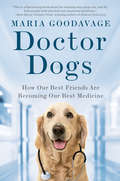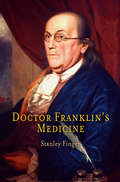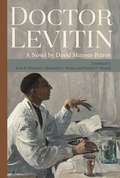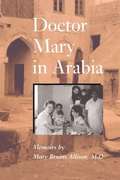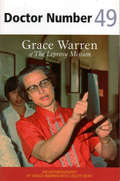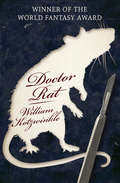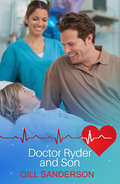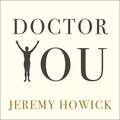- Table View
- List View
Dizzy
by Deborah Mitchell Jack J. WazenFind Your Balance Recent statistics show that more than 90 million Americans will experience dizziness at some time during their lives. The good news is that 80 to 90 percent of sufferers can find relief. In this comprehensive guide, one of the nation's leading authorities on balance disorders tells the millions of sufferers what they can to do to conquer dizziness -- what it is, why they feel this way, and what they can do about it. In Dizzy, Dr. Jack Wazen uncovers the root causes of this disabling, difficult-to-diagnose syndrome and shares the therapies and techniques that can return patients' lives to normal, including essential information on: How to identify balance disorders Types of disorders: from the inner ear to the circulatory and central nervous systems to systemic, sensory, and visual disorders Balance rehabilitation therapy Medication and surgical options Acupuncture, biofeedback, hypnosis, and nutritional and herbal supplements From where to get help to the surprising benefits of a low-sodium diet, filled with encouraging stories of patients who have found permanent relief, Dizzy shows chronic sufferers how to get their lives back on track -- and in balance.
Do I Know You?: A Faceblind Reporter's Journey into the Science of Sight, Memory, and Imagination
by Sadie DingfelderAn award-winning science writer discovers she&’s faceblind and investigates the neuroscience of sight, memory, and imagination—while solving some long-running mysteries about her own life. Science writer Sadie Dingfelder has always known that she&’s a little quirky. But while she&’s made some strange mistakes over the years, it&’s not until she accosts a stranger in a grocery store (whom she thinks is her husband) that she realizes something is amiss. With a mixture of curiosity and dread, Dingfelder starts contacting neuroscientists and lands herself in scores of studies. In the course of her nerdy midlife crisis, she discovers that she is emphatically not neurotypical. She has prosopagnosia (faceblindness), stereoblindness, aphantasia (an inability to create mental imagery), and a condition called severely deficient autobiographical memory. As Dingfelder begins to see herself more clearly, she discovers a vast well of hidden neurodiversity in the world at large. There are so many different flavors of human consciousness, and most of us just assume that ours is the norm. Can you visualize? Do you have an inner monologue? Are you always 100 percent sure whether you know someone or not? If you can perform any of these mental feats, you may be surprised to learn that many people—including Dingfelder—can&’t. A lively blend of personal narrative and popular science, Do I Know You? is the story of one unusual mind&’s attempt to understand itself—and a fascinating exploration of the remarkable breadth of human experience.
Do Miracles Exist?
by Jan de VriesIn this controversial book, Jan de Vries explores modern miracles as well as the 'miracle of Lourdes'. He discusses witch doctors and what he has personally witnessed in the Far East. He warns against exorcism and talks of the many 'possessed' people he has treated. He also shares with his readers some of the mysterious ways that alternative medicine has worked 'miracles' for thousands of patients.
Do No Harm
by Don DonaldsonA pediatric resident's nephew arrives in the emergency room with a mysterious paralysis. A brilliant brain surgeon performs a speculative procedure that cures the boy. But as the resident monitors her nephew's condition, she begins to wonder if the strange side effects are a result of incompetence or something more sinister.
Do No Harm
by Gregg HurwitzThe doors to the UCLA Medical Center Emergency Room burst open and a young nurse stumbles in-- blinded, her once-beautiful face hideously blistered and burning from a savage attack by an unknown assailant. A dedicated physician, ER Chief David Spier is no stranger to the terrible ravages of senseless violence. But this tragedy hits too close to home; the victim is a colleague. A second violent assault suggests the unthinkable: A disturbed man is stalking the medical center, and specifically the women who work there. It's up to Dr. Spier to keep the emergency room running smoothly and efficiently, even as his terrified coworkers wonder who might be next. But destiny is about to place him at the very center of a media frenzy that erupts in the wake of the attacks when the brutal assailant himself is dragged into the E.R. in handcuffs and placed under Dr. Spier's care.., as a patient. Hindered by a mutinous staff that refuses to administer to the damaged man, up against angry L.A. cops who would rather see the criminal dead than imprisoned and alarmed media hungry for a lead story at any cost, Dr. Spier must now make the most difficult ethical decision of his career. But by doing so he underestimates the power and cunning of the man he is sworn to heal, and inadvertently unleashes a bloody wave of horror that threatens to engulf every -md eve:*..hing he cares about. A single act of humanity has made him a pariah in the eyes of the city--and the target of a twisted, tormented madman's hope and vengeance. Dr. Spier's most sacred oath as a healer has become his death sentence. To save a city under siege and himself, he must descend into the blackest depths of a twisted and vicious mind.., to unlock an unspeakable secret that has been hidden away for decades behind hospital doors.
Do No Harm: A skilled surgeon makes the best murderer . . .
by Jack JordanTHE SUNDAY TIMES BESTSELLER AND WATERSTONES THRILLER OF THE MONTH 'Chilling and perfectly paced, one to put on the very top of your TBR!' Sarah Pearse 'Thriller fans will be in heaven' Louise CandlishMY CHILD HAS BEEN TAKEN. AND I&’VE BEEN GIVEN A CHOICE . . . KILL A PATIENT ON THE OPERATING TABLE OR LOSE MY SON FOREVER. The man lies on the table in front of me. As a surgeon, it&’s my job to save him. As a mother, I know I must kill him. You might think that I&’m a monster. But there really is only one choice. I must get away with murder. Or I will never see my son again.I&’VE SAVED MANY LIVES. WOULD YOU TRUST ME WITH YOURS?Five star reader reviews: &‘Absolutely phenomenal&’ &‘Kept me hooked from the very start!' &‘Believe me, you&’ll not want to put this down&’ &‘Everything about Do No Harm was absolutely brilliant' &‘So full of tension and twists!&’
Do No Harm: Protecting Connected Medical Devices, Healthcare, and Data from Hackers and Adversarial Nation States
by Matthew WebsterDiscover the security risks that accompany the widespread adoption of new medical devices and how to mitigate them In Do No Harm: Protecting Connected Medical Devices, Healthcare, and Data from Hackers and Adversarial Nation States, cybersecurity expert Matthew Webster delivers an insightful synthesis of the health benefits of the Internet of Medical Things (IoMT), the evolution of security risks that have accompanied the growth of those devices, and practical steps we can take to protect ourselves, our data, and our hospitals from harm. You’ll learn how the high barriers to entry for innovation in the field of healthcare are impeding necessary change and how innovation accessibility must be balanced against regulatory compliance and privacy to ensure safety. In this important book, the author describes: The increasing expansion of medical devices and the dark side of the high demand for medical devices The medical device regulatory landscape and the dilemmas hospitals find themselves in with respect medical devices Practical steps that individuals and businesses can take to encourage the adoption of safe and helpful medical devices or mitigate the risk of having insecure medical devices How to help individuals determine the difference between protected health information and the information from health devices--and protecting your data How to protect your health information from cell phones and applications that may push the boundaries of personal privacy Why cybercriminals can act with relative impunity against hospitals and other organizations Perfect for healthcare professionals, system administrators, and medical device researchers and developers, Do No Harm is an indispensable resource for anyone interested in the intersection of patient privacy, cybersecurity, and the world of Internet of Medical Things.
Do No Harm: Stories of Life, Death and Brain Surgery
by Henry MarshThe Instant New York Times best seller! Riveting. . . . [Marsh] gives us an extraordinarily intimate, compassionate and sometimes frightening understanding of his vocation. -The New York Times Winner of the PEN Ackerley Prize Shortlisted for both theGuardianFirst Book Prize and the Costa Book Award Longlisted for the Samuel Johnson Prize for Non-Fiction A Finalist for the Pol Roger Duff Cooper Prize A Finalist for the Wellcome Book Prize AFinancial TimesBest Book of the Year AnEconomistBest Book of the Year What is it like to be a brain surgeon? How does it feel to hold someone's life in your hands, to cut into the stuff that creates thought, feeling, and reason? How do you live with the consequences of performing a potentially lifesaving operation when it all goes wrong? In neurosurgery, more than in any other branch of medicine, the doctor's oath to "do no harm" holds a bitter irony. Operations on the brain carry grave risks. Every day, leading neurosurgeon Henry Marsh must make agonizing decisions, often in the face of great urgency and uncertainty. If you believe that brain surgery is a precise and exquisite craft, practiced by calm and detached doctors, this gripping, brutally honest account will make you think again. With astonishing compassion and candor, Marsh reveals the fierce joy of operating, the profoundly moving triumphs, the harrowing disasters, the haunting regrets, and the moments of black humor that characterize a brain surgeon's life. Do No Harmprovides unforgettable insight into the countless human dramas that take place in a busy modern hospital. Above all, it is a lesson in the need for hope when faced with life's most difficult decisions.
Do No Harm: Stories of Life, Death and Brain Surgery
by Henry Marsh'Enthralling' GUARDIAN'Incredibly absorbing ... astonishingly candid' Bill BrysonWinner of the PEN Ackerley Prize and the South Bank Sky Arts Award for LiteratureShortlisted for the Costa Biography Award; Duff Cooper Prize; Wellcome Book Prize; Guardian First Book Award; and Slightly Foxed Best First Biography PrizeLonglisted for the Samuel Johnson Prize for Non-Fiction What is it like to be a brain surgeon?How does it feel to hold someone's life in your hands, to cut through the stuff that creates thought, feeling and reason?How do you live with the consequences when it all goes wrong?DO NO HARM offers an unforgettable insight into the highs and lows of a life dedicated to operating on the human brain, in all its exquisite complexity. With astonishing candour and compassion, Henry Marsh reveals the exhilarating drama of surgery, the chaos and confusion of a busy modern hospital, and above all the need for hope when faced with life's most agonising decisions.
Do We Still Need Doctors? (Reflective Bioethics)
by John D. Lantos, M.D.Written with poignancy and compassion, Do We Still Need Doctors? is a personal account from the front lines of the moral and political battles that are reshaping America's health care system.
Do You Believe in Magic?: The Sense and Nonsense of Alternative Medicine
by Paul A. OffitA physician offers an impassioned and meticulously researched exposé of the alternative medicine industry, separating the sense from the nonsense.A half century ago, acupuncture, homeopathy, naturopathy, Chinese herbs, Christian exorcisms, dietary supplements, chiropractic manipulations, and ayurvedic remedies were considered on the fringe of medicine. Now these practices—known variably as alternative, complementary, holistic, or integrative medicine—have become mainstream, used by half of all Americans today to treat a variety of conditions, from excess weight to cancer.But alternative medicine is an unregulated industry under no legal obligation to prove its claims or admit its risks, and many popular alternative therapies are ineffective, expensive, or even deadly. In Do You Believe in Magic?, health advocate Dr. Offit debunks the treatments that don’t work and tells us why, and takes on the media celebrities who promote alternative medicine. Using dramatic real-life stories, he separates the sense from the nonsense, explaining why any therapy—alternative or traditional—should be scrutinized. As Dr. Offit explains, some popular therapies are remarkably helpful due to the placebo response, but “there’s no such thing as alternative medicine. There’s only medicine that works and medicine that doesn’t.”
Do You Really Need That Pill?: How to Avoid Side Effects, Interactions, and Other Dangers of Overmedication
by Jennifer Jacobs David L. FaclmA silent epidemic in the U.S. is imperiling our health: over-medication. Today, one-third of all adults take two or more prescription drugs and half of all seniors take more than five daily. This book-the first of its kind-shows readers how to avoid the dangers of over-medication.The first half of the book describes the harmful effects of taking too many drugs, including drug-drug interactions, medication errors, unintentional overdoses, unnecessary medications, made-up illnesses ("restless leg syndrome”), and side effects that actually mimic a new illness.The second half discusses the benefits and harm caused by many of the most popular drugs used to treat diseases such as high blood pressure, diabetes, high cholesterol, acid reflux, depression, and pain. It tells which drugs are really needed, and whether or not they cause side effects.Finally, readers will learn how to discuss their concerns about too many medications with their health care providers, simple ways to make positive lifestyle changes, and when to consider alternative healing approaches.Combining stories of those who have suffered ill effects from taking too many drugs with data from cutting edge medical findings, Do You Really Need to Take That Pill? helps readers realize they can choose different solutions to their health problems.
Doc: The Rape of the Town of Lovell
by Jack OlsenDeep in the heart of Mormon country, Lovell, Wyoming, is a small town populated by decent, God-fearing people who abide by the most rigorous strictures of pure, clean living. The sacred institutions are church and family, the guiding light one's faith in God. Yet from the opening pages of "Doc" it is clear that something has gone terribly awry in Lovell. The trusted family doctor--the man who birthed the town's babies, cared for husbands, wives, and children, counseled and befriended the townspeople--was also raping his patients. Dr. John Story assaulted dozens of women, ranging in age from thirteen to seventy, over a period of twenty-five years. Brutally violating the sanctity of the doctor-patient relationship, Dr. Story raped, molested, or sexually humiliated the women who most relied upon him. Mormons for the most part, many of the women were sexually ignorant until their wedding night, when they discovered what their doctor had been doing to them on the examining table. What is fascinating about "Doc" is not simply the terrible crimes but that no one spoke out against Story for years. The women's silence was based on disbelief, guilt, shame, and fear. They chastised themselves, thinking they had somehow "encouraged" the doctor, or imagined what they had felt or seen. They did not tell their husbands for fear they would kill Story, they did not tell their friends out of embarrassment. It took twenty-five years, with only a few whispers and hints of wrongdoing in the intervening time, before a small group of courageous, distressed women fought their town and the establishment to bring Dr. Story to justice. A veteran master of true crime, Jack Olsen moves in a new direction with "Doc." This is not solely the tale of a sociopath, like those whose complex, twisted minds Olsen has probed in such classics as "Son" and Cold Kill. It is the tale of women who are victims as well as heroes, of one man's violation of an entire town. Including the religious and social mores of Lovell in his scope, Olsen gently prods at communal secrets to unearth Dr. Story's legacy of pain and anger. Compassionate and sensitive, "Doc" is a tribute to a reporter of exceptional skill and humanity.
Docking Screens for Drug Discovery (Methods in Molecular Biology #2053)
by Walter Filgueira De Azevedo Jr.This book focuses on recent developments in docking simulations for target proteins with chapters on specific techniques or applications for docking simulations, including the major docking programs. Additionally, the volume explores the scoring functions developed for the analysis of docking results and to predict ligand-binding affinity as well as the importance of docking simulations for the initial stages of drug discovery. Written for the highly successful Methods in Molecular Biology series, this collection presents the kind of detail and key implementation advice to ensure successful results. Authoritative and practical, Docking Screens for Drug Discovery aims to serve those interested in molecular docking simulation and also in the application of these methodologies for drug discovery.
Doctor Dogs: How Our Best Friends Are Becoming Our Best Medicine
by Maria GoodavageNew York Times bestselling author Maria Goodavage takes us on a thrilling, delightful, globe-trotting journey to discover the heartwarming and fascinating new world of doctor dogs. In this groundbreaking book, Goodavage brings us behind the scenes of cutting-edge science at top research centers, and into the lives of people whose well-being depends on their devoted, highly skilled personal MDs (medical dogs). With her signature wit and passion, Goodavage explores how doctor dogs are becoming our happy allies in the fight against dozens of physical and mental conditions. We meet dogs who detect cancer and Parkinson’s disease, and dogs who alert people to seizures and diabetic lows or highs and other life-threatening physical ailments. Goodavage reveals the revolutionary ways dogs are helping those with autism, anxiety, depression, schizophrenia, and post-traumatic stress disorder. And she introduces us to intrepid canines who are protecting us from antibiotic-resistant bugs, and to dogs who may one day help keep us safe from epidemic catastrophe. Their paycheck for their lifesaving work? Heartfelt praise and a tasty treat or favorite toy. The emotional element in Doctor Dogs delivers as powerfully as the science. You don’t have to be a dog lover to care deeply about what these dogs are doing and what we are learning from them—although if you’re not a dog lover, you probably will be by the end of the book.
Doctor Franklin's Medicine
by Stanley FingerSelected by Choice magazine as an Outstanding Academic TitleAmong his many accomplishments, Benjamin Franklin was instrumental in founding the first major civilian hospital and medical school and in the American colonies. He studied the efficacy of smallpox inoculation and investigated the causes of the common cold. His inventions--including bifocal lenses and a "long arm" that extended the user's reach--made life easier for the aged and afflicted. In Doctor Franklin's Medicine, Stanley Finger uncovers the instrumental role that this scientist, inventor, publisher, and statesman played in the development of the healing arts--enhancing preventive and bedside medicine, hospital care, and even personal hygiene in ways that changed the face of medical care in both America and Europe.As Finger shows, Franklin approached medicine in the spirit of the Enlightenment and with the mindset of an experimental natural philosopher, seeking cures for diseases and methods of alleviating symptoms of illnesses. He was one of the first people to try to use electrical shocks to help treat paralytic strokes and hysteria, and even suggested applying shocks to the head to treat depressive disorders. He also strove to topple one of the greatest fads in eighteenth-century medicine: mesmerism.Doctor Franklin's Medicine looks at these and the many other contributions that Franklin made to the progress of medical knowledge, including a look at how Franklin approached his own chronic illnesses of painful gout and a large bladder stone. Written in accessible prose and filled with new information on the breadth of Franklin's interests and activities, Doctor Franklin's Medicine reveals the impressive medical legacy of this Founding Father.
Doctor Levitin
by Maxim D. Shrayer David Shrayer-PetrovAvailable now for the first time in English, Doctor Levitin is a modern classic in Jewish literature. A major work of late twentieth-century Russian and Jewish literature since its first publication in Israel in 1986, it has also seen three subsequent Russian editions. It is the first in David Shrayer-Petrov’s trilogy of novels about the struggle of Soviet Jews and the destinies of refuseniks. In addition to being the first novel available in English that depicts the experience of the Jewish exodus from the former USSR, Doctor Levitin is presented in an excellent translation that has been overseen and edited by the author’s son, the bilingual scholar Maxim D. Shrayer. Doctor Levitin is a panoramic novel that portrays the Soviet Union during the late 1970s and early 1980s, when the USSR invaded Afghanistan and Soviet Jews fought for their right to emigrate. Doctor Herbert Levitin, the novel’s protagonist, is a professor of medicine in Moscow whose non-Jewish wife, Tatyana, comes from the Russian peasantry. Shrayer-Petrov documents with anatomical precision the mutually unbreachable contradictions of the Levitins’ mixed marriage, which becomes an allegory of Jewish-Russian history. Doctor Levitin’s Jewishness evolves over the course of the novel, becoming a spiritual mission. The antisemitism of the Soviet regime forces the quiet intellectual and his family to seek emigration. Denied permission to leave, the family of Doctor Levitin is forced into the existence of refuseniks and outcasts, which inexorably leads to their destruction and a final act of defiance and revenge on the Soviet system. A significant contribution to the works of translated literature available in English, David Shrayer-Petrov’s Doctor Levitin is ideal for any reader of fiction and literature. It will hold particular interest for those who study Jewish or Russian literature, culture, and history and Cold War politics.
Doctor Mary in Arabia: Memoirs
by Mary Bruins AllisonUntil fairly recently, Arab women rarely received professional health care, since few women doctors had ever practiced in Arabia and their culture forbade them from consulting male doctors. Not surprisingly, Dr. Mary Bruins Allison faced an overwhelming demand when she arrived in Kuwait in 1934 as a medical missionary of the Reformed Church of America. Over the next forty years, "Dr. Mary" treated thousands of women and children, faithfully performing the duties that seemed required of her as a Christian—to heal the sick and seek converts. These memoirs record a fascinating life. Dr. Allison briefly describes her upbringing and her professional training at Women's Medical College of Pennsylvania. She then focuses on her experiences in Kuwait, where women of all classes, including royalty, flocked to her care. In addition to describing many of her cases, Dr. Allison paints a richly detailed picture of life in Kuwait both before and after the discovery of oil transformed the country. Her recollections include invaluable details of women's lives in the Middle East during the early and mid-twentieth century. They add a valuable chapter to the story of modern medicine, to the largely unsuccessful efforts of the Christian church to win converts in the Middle East, and to the opportunities and limitations that faced American women of the period. Dr. Allison also worked briefly in Bahrain, Qatar, Oman, and India, and she includes material on each country. The introduction situates her experiences in the context of Middle Eastern and medical developments of the period.
Doctor Number 49: Grace Warren of the Leprosy Mission
by Grace Warren Lesley HicksAccident victim Daren was in despair, facing amputation of his foot, when he met Doctor Number 49. Over several years, he had consulted 48 other doctors, but his nerve-damaged foot had remained stubbornly unhealed.Dr Grace Warren has brought hope and healing to thousands worldwide, saving feet and transforming the lives of those with diabetes and leprosy by her inventive surgical skills, and also by her faith, her preparedness to obey God, and her tireless willingness to travel and teach.Doctor Number 49 is an inspiration for a new generation of health professionals and a stirring record of a unique Christian missionary career. In addition, it provides insights on managing problem feet dut to diabetes and nerve damage from other causes.
Doctor Rat
by William KotzwinkleWinner of the World Fantasy Award"DOCTOR RAT is dazzlingly original, witty and insanely satiric. It is also occasionally quite beautiful. Kotzwinkle's tale is a dizzying montage...from scenes of gross black humor in the experimental lab to idyllic glimpses of the animal kingdom. Designed to shock us into ecological awareness, Kotzwinkle's lab experiments are hair-raising."--Los Angeles TimesA bloodcurdling novel in the spirit of ANIMAL FARM and 1984, DOCTOR RAT is a trip through a laboratory worthy of a Nazi mad doctor, except this doctor is a wisecracking rodent who could have been played by Groucho Marx. The London Times called DOCTOR RAT, "a splendidly nutty animal Magnificat with echoes of William Blake.""Mr. Kotzwinkle is a first-rate fabulist."--The New York Times
Doctor Ryder and Son: A Touching Medical Romance (Medical Romances #8)
by Gill SandersonAnother delightful medical romance by best-selling author Gill Sanderson!Readers love Gill's gripping medical romances!'Stories are brilliant and find it difficult to put down' 5* reader review'Yet another living heartfelt story. I could read these books forever....' 5* reader review'A brilliant book of such quality !!' 5* reader reviewSean and Luke both needed Kate...Still reeling from his divorce, and unable to cope with their son Sean's severe leukaemia, Dr Luke Ryder had held women at bay. But when he saw Sister Kate Storm with her small patients he knew that she could give his mother support and help in caring for nine-year-old Sean. In need of a break, and as Sean was in remission, Kate felt that looking after the boy would be more like a holiday than work. She knew that Luke was the one for her, and Luke clearly found her equally attractive - but how could she convince him to trust again?Don't miss Gill Sanderson's entertaining medical romances, including the Good, Bad and Ugly and the A Lakeland Practice series.
Doctor You: Revealing the science of self-healing
by Jeremy Howick'Read this breakthrough book!' Deepak ChopraThrow away your statins, painkillers and antidepressants and pick up this book to find out how you can harness the body's natural powers to heal itself.Doctor You contains the first hard scientific evidence to show that some so-called alternative or natural treatments are not only cheaper than industrially produced drugs and lacking the harmful side effects, they are also equally effective.Written using the latest, high quality, conventional evidence Doctor You arms you with knowledge that will empower you to make the right choices about what drugs to take, what drugs to give your children, and when you should let your body do its thing.
Doctor You: Revealing the science of self-healing
by Jeremy Howick'Read this breakthrough book!' Deepak ChopraThrow away your statins, painkillers and antidepressants and pick up this book to find out how you can harness the body's natural powers to heal itself.Doctor You contains the first hard scientific evidence to show that some so-called alternative or natural treatments are not only cheaper than industrially produced drugs and lacking the harmful side effects, they are also equally effective.Written using the latest, high quality, conventional evidence Doctor You arms you with knowledge that will empower you to make the right choices about what drugs to take, what drugs to give your children, and when you should let your body do its thing.
Doctor You: Revealing the science of self-healing
by Jeremy Howick'Read this book!' - Deepak Chopra'A timely book on a timeless problem of how body and mind interact to affect our health and well-being. Beautifully written by an international expert in the field, it challenges old habits of thinking and promises new ways of exploring what it means to live an integrated life. - Mark Williams, author of Mindfulness, Professor of Clinical Psychology and former director of the Oxford Mindfulness CentreExamining the over use of modern medicine and how your body can heal itself.Twenty per cent of Americans, half of the elderly British, and two thirds of older Canadians take at least five prescription drugs per day - their lives a non-stop ritual of pill popping and trying to manage side effects. One in ten people in developed countries take antidepressants. Millions of boys who can't sit still in school are prescribed methamphetamines. Modern medicine has been overused. Skyrocketing global healthcare costs render this overuse of medicine increasingly unaffordable. The wonders of modern medicine have also obscured the body's ability to heal itself. Your body produces its own drugs that can treat pain as well as drugs, cure some joint problems as well as a surgeon, and treat most mild depression as well as a psychologist. We've all heard of endorphins, but did you know 'endorphin' literally means 'morphine made by your body'? Besides the body's self-healing abilities, latest evidence clearly show that states of mind affect our health. Relaxing, positive thinking, and comfortable social environments can all improve our health as much as blockbuster drugs.Written using the latest, high quality, conventional evidence Doctor You arms you with knowledge that will empower you to make the right choices about what drugs to take, what drugs to give your children, and when you should let your body do its thing.(P)2017 Hodder & Stoughton Limited
